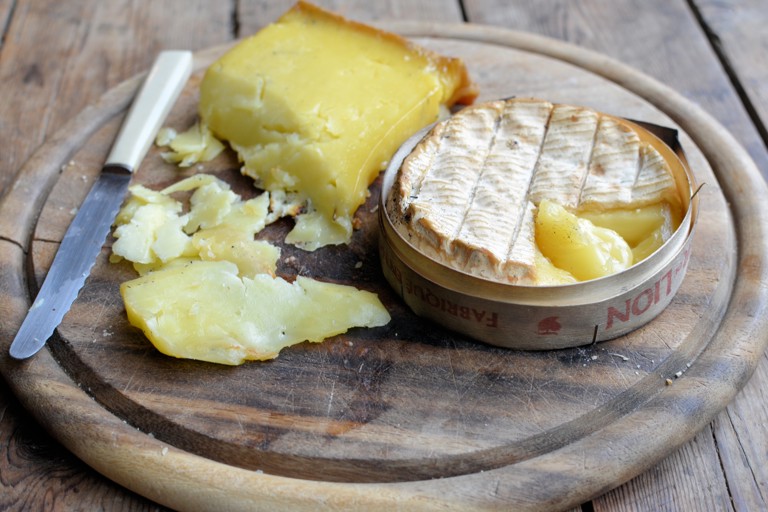Cold-smoked cheese
Discover how to cold-smoke cheese at home, without the fuss or the need for sophisticated equipment.
I’ve been delving into the idea of smoking my food lately, it’s an area of food preparation that I have always been fascinated with. I’ve hot-smoked fish before, it’s fairly easy to smoke fish on top of a hob, in a wok or a biscuit tin, and the results are very professional. But now, it’s cheese I want to concentrate on, which is slightly tricky to smoke as it must be cold smoked to avoid the cheese from melting.
Most people will know or have tasted smoked cheese – the most popular used to be the cylindrical smoked cheeses from Austria, wrapped in a brown plastic casing. There’s also a home-produced British smoked cheese too: Applewood, a traditional farmhouse cheddar from Ilchester, which also goes by the name of Applewood smoked cheddar, when smoked of course. This dense semi-hard cheese was first invented in 1965 in Somerset, England.
Firstly, you have to select your cheese. Most hard cheeses such as cheddar, red Leicester and double Gloucester work well, as well as crumbly cheeses such as Wensleydale, Cheshire and Lancashire. Soft cheeses don’t work well, and cheeses such as Stilton and Danish blue are not suitable at all, and, I did read that camembert and brie don’t smoke well, but I managed to smoke a whole camembert in its box and the results were fantastic.
This is a very simple way to smoke cheese in your own home, and all you will need in the way of equipment is a large biscuit tin or tin box with a lid, wire rack or chicken wire, a barbecue with a lid, sawdust and the appropriate aromatics (see method in recipe below).
I smoked my cheese, a Cantal (French hard cheese) in the garage as not to smoke the whole house out! It was smoked to the level that we wanted in under an hour and the results were fabulous – we were rewarded with a subtle herb-scented cheese with a mild smoky taste. We were so taken with the results that we immediately slapped another slab of cheese in the biscuit tin and then experimented with the boxed camembert!
If you follow the method below exactly, you will also be rewarded with a beautifully smoked cheese along with any extra flavouring you fancy – we used herbes de Provence for both cheeses, but I’ll list some alternative ideas below. One word of warning, do not place the cheese over flames or bright red embers, it needs to be placed over 'smoking' sawdust that has no flames and that has not exceeded the temperature of 15°C. If it’s any hotter you will end up with a molten mass of sawdust coated cheese!
We used ours as a pizza toping but it’s great as part of a cheeseboard, in salads, for gratins, omelettes and on toast.
Ingredients
Metric
Imperial
- hard cheese, such as cheddar, Cantal, double Gloucester, or crumbly cheese such as Wensleydale, Cheshire or Lancashire
- herbes de Provence, or any other aromatics such as rosemary, dried chillies, garlic or lavender
Method
Get in touch
Please sign in or register to send a comment to Great British Chefs.



